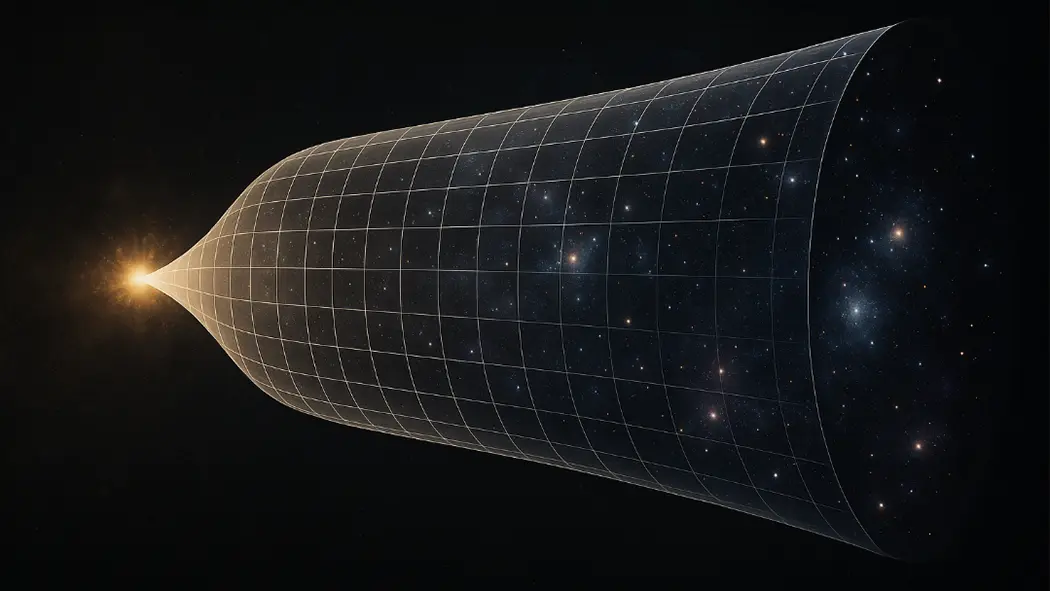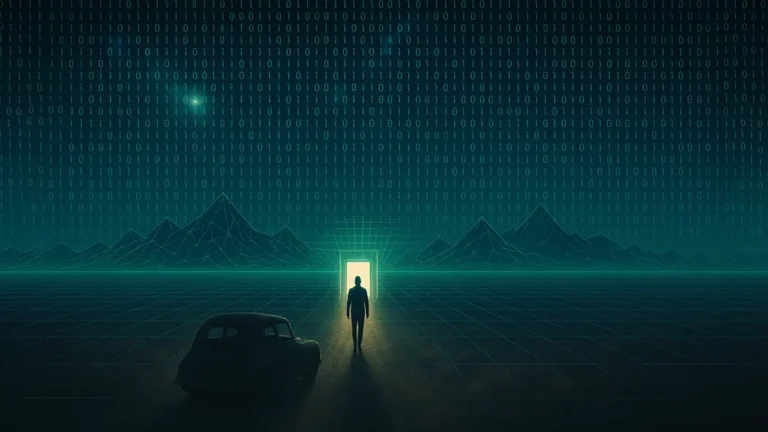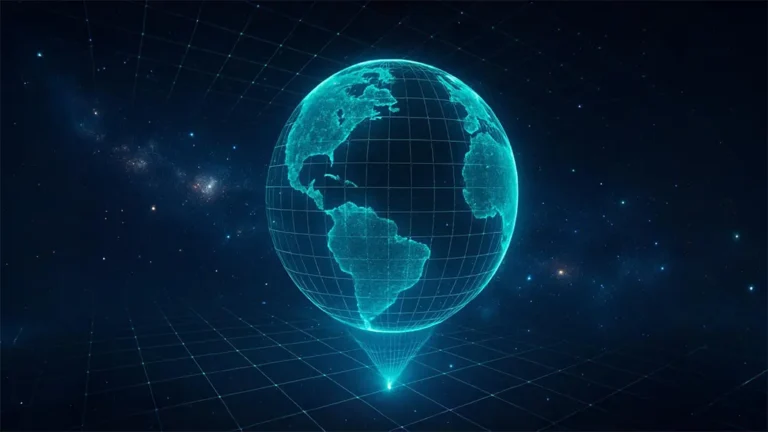Cosmic inflation is a theory about the very early universe. It was developed as an extension of the Big Bang Theory. This theory helps explain how the universe came to be the way it is today.
The Big Bang Theory is widely accepted by the scientific community today. It was first presented in 1931 and gained support from the majority of scientists by the 1970s. However, it faced three major problems:
- Horizon Problem
- Flatness Problem
- Monopole Problem
In 1980, Dr. Alan Guth presented the theory of inflation in his paper to address these problems. Two other scientists, Alexei Starobinsky and Andrei Linde, also made significant contributions to the theory. As a result of their groundbreaking work, all three were awarded the Kavli Prize in 2014.
What is the Cosmic Inflation Theory?
The cosmic inflation theory says that right after the Big Bang, the universe expanded incredibly fast. At that time, it was unimaginably small, dense, and hot. Then, in less than a trillionth of a second, it grew exponentially.
Imagine blowing up a balloon. Instead of inflating slowly, the balloon instantly expands to a size much bigger than anything we can imagine! In the same way, the universe grew extremely fast right after the Big Bang. This happened much faster than the speed of light and lasted for a tiny fraction of a second. This rapid expansion is called inflation. This rapid growth did not last long. It only lasted about 10-33 seconds. After that, the universe’s expansion slowed down to a more steady pace.
During inflation, the universe expanded by at least 1026 times (1 followed by 26) in each of the three dimensions. This means that the universe’s volume increased by at least 1078 times.
Size of the Universe Before and After Inflation
Before Inflation
The universe was tiny, much smaller than a proton. Its size was estimated to be around 10-35 meters. That is equal to 0.00000000000000000000000000000000001 meters. This is incredibly small. It is much smaller than the nucleus of an atom.
After Inflation
In less than a trillionth of a second, the universe expanded rapidly. Right after inflation, the universe grew to about the size of a grapefruit. That is roughly 10 centimeters in diameter.
Let us use a simple analogy to better understand it. Imagine holding a tiny seed. This seed represents the universe before inflation. In less than a trillionth of a second, this seed grows to the size of a planet. That is the level of rapid growth we are talking about.
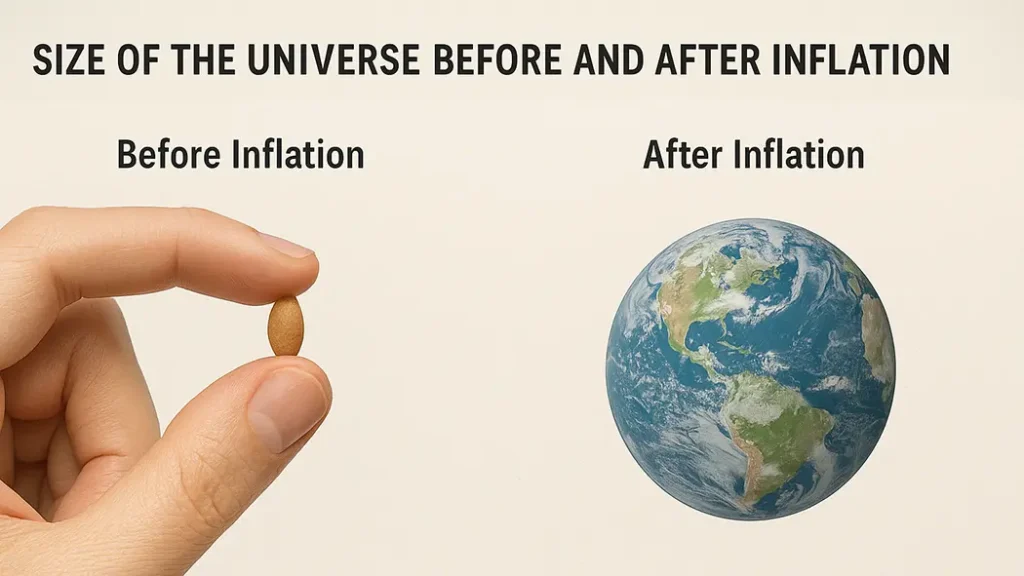
Why Cosmic Inflation Theory Was Needed: Three Big Bang Theory Problems
The Big Bang theory describes how the universe originated from a hot, dense, and small state. It then expanded and cooled over time. But it doesn’t explain what caused the rapid expansion or why the universe is so uniform and smooth.
The Big Bang theory had three major problems. At first, there was no satisfactory answer for them.
1. The Horizon Problem
The horizon problem poses a simple question: Why does the universe have the same temperature and density in all directions?
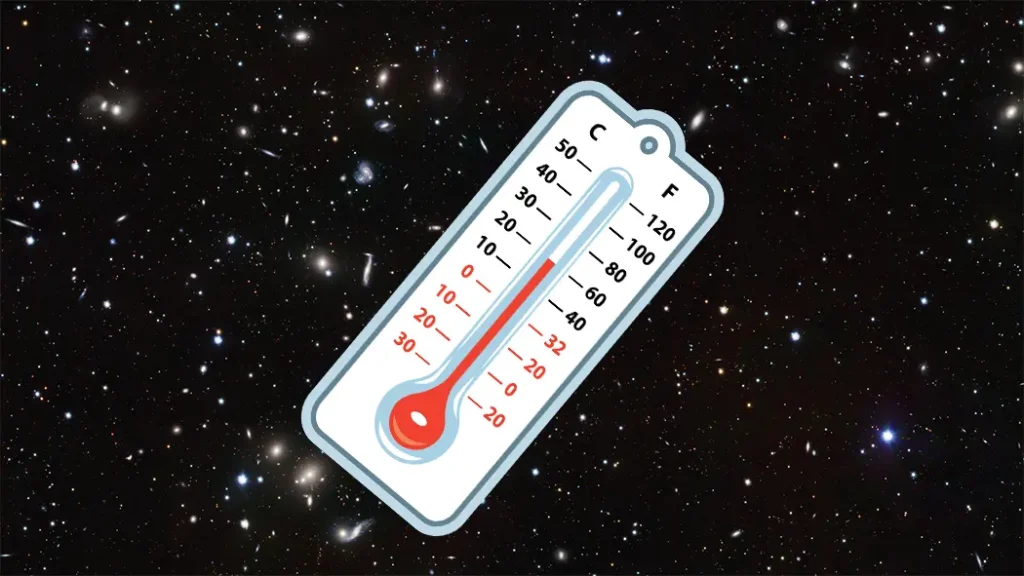
We observe that distant parts of the universe have almost the same temperature and density. In other words, the universe looks very smooth. But without a way to “communicate,” this shouldn’t be possible. The Big Bang theory could not explain this. Distant regions should not have been able to exchange energy or information because they are too far apart.
Imagine two people at opposite ends of a park. They have never met, yet somehow, they wear identical outfits. It feels like magic, unless they were once together.
2. The Flatness Problem
The universe looks flat. It is like a giant sheet of paper, instead of curved like a ball. This is what scientists call the flatness problem.
Einstein’s General Theory of Relativity explains that mass bends space and time. Because our universe contains mass, you would expect it to be curved in some way.
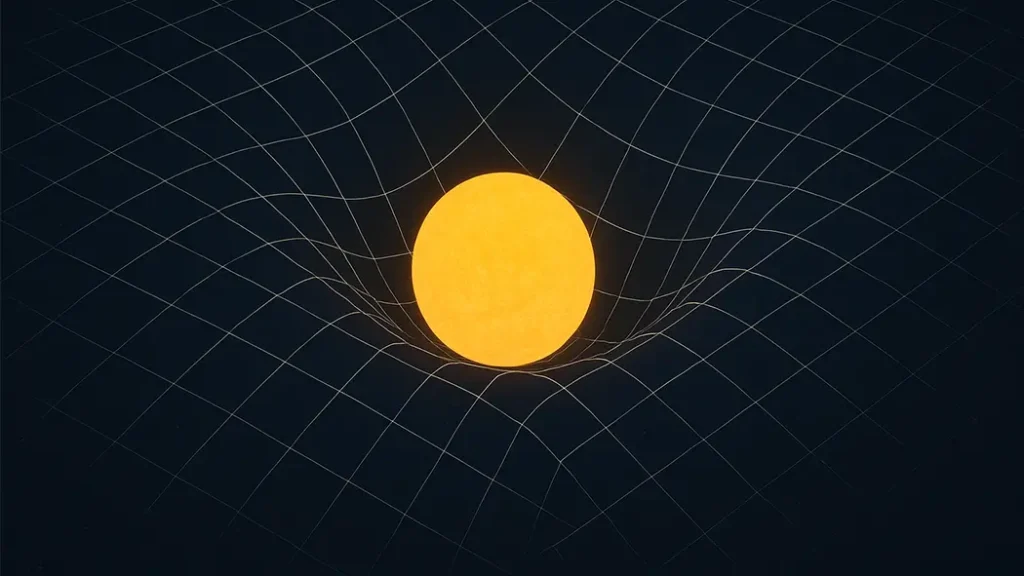
The Big Bang theory suggests three possible shapes for the universe. It could be positively curved (like a sphere), negatively curved (like a saddle), or flat (like a table). Measurements, however, show that the universe is incredibly close to flat.

For this to happen, the conditions right after the Big Bang had to be extremely precise. It is like trying to balance a pencil on its tip. It seems almost impossible without help.
3. The Monopole Problem
The monopole problem asks a simple question: Why don’t we see certain particles, called magnetic monopoles, in the universe today?
Magnetic monopoles are special particles predicted by the Big Bang theory. Scientists believe that the hot and dense early universe should have created a huge number of these particles. Monopoles are stable, so they should still exist today.
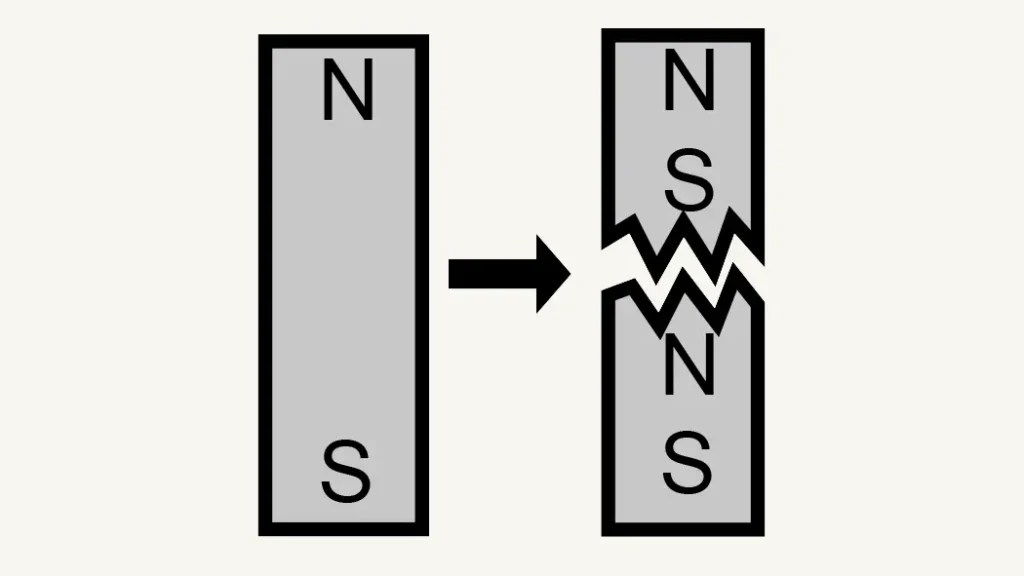
If these particles were common, we should be able to find them easily. But despite searching, no magnetic monopoles have ever been detected. This raises a big question: where are they?
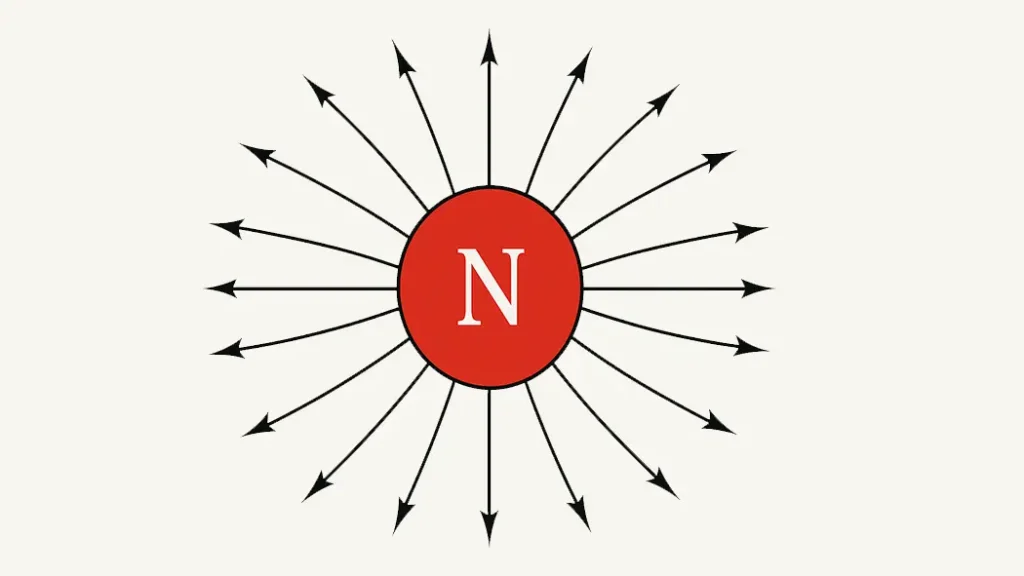
Solution by Cosmic Inflation Theory
The Cosmic Inflation Theory solves all three problems.
1. Inflation Theory’s Solution to the Horizon Problem
The universe started small. This means distant regions were once close enough to share energy. This allowed them to reach a uniform temperature. Inflation stretched these regions apart afterward.
2. Inflation Theory’s Solution to the Flatness Problem
Inflation stretched the universe so much that any initial curvature became insignificant. This left space flat, like a sheet of paper.
Imagine a small balloon with wrinkles. These wrinkles represent curved space. As the balloon inflates quickly, the wrinkles start to stretch. This makes the surface appear smooth. Inflation did something similar to the universe.
3. Inflation Theory’s Solution to the Monopole Problem
During inflation, the universe expanded very quickly. This caused magnetic monopoles to spread out and dilute. As a result, they are now extremely rare or nonexistent.
What Caused Cosmic Inflation?
The cause of cosmic inflation is an unknown energy field called the inflaton field. This field existed in the early universe and had special properties. It caused space to expand at an extraordinary rate.
The inflaton field created an effect similar to anti-gravity. Instead of gravity pulling things together, this energy made space expand faster and faster. This phenomenon does not directly relate to any of the four familiar forces. These include gravity, electromagnetic, strong, and weak forces.
We do not fully understand the inflaton field yet. However, it is a key focus of scientific research. Understanding the inflaton field is one of the biggest challenges in modern physics. Some scientists believe the inflaton field might be related to a grand unified force. This force is thought to have existed when the universe was extremely hot and dense.
What Happened to the Inflaton Field? Where Is It Now?
After inflation ended, the inflaton field released its energy. This energy turned into particles and radiation. It filled the universe with the matter we recognize today, such as protons, neutrons, and electrons. Today, the inflaton field no longer causes inflation. It either disappeared or became very weak.
Some theories suggest that part of this energy might still exist. It could be dark energy. Dark energy is thought to be causing the universe to expand once again. However, this expansion is much slower than during inflation.
Expansion Rate of the Universe
The universe is currently expanding. However, its rate of expansion is not constant. The rate of expansion has changed over time and is currently accelerating.
Here is a simplified timeline:
1. Inflation (at the Very Beginning)
Right after the universe began, it expanded extremely fast during cosmic inflation. This was a brief but rapid expansion.
2. Slowing Down (after Inflation)
For billions of years after inflation, the universe’s expansion slowed down. This happened because of the gravitational pull of matter. Stars, galaxies, and dark matter tried to pull everything back together.
3. Accelerating Expansion (Now)
About 5 billion years ago, the expansion began to speed up again. Scientists discovered this acceleration in 1998 by observing distant supernovae. This speeding up is driven by dark energy, a mysterious force that acts as a repelling force
How Do Scientists Know about Inflation?
Studying the early universe is challenging because we cannot directly observe events from billions of years ago. However, scientists have smart ways to gather evidence.
1. Cosmic Microwave Background (CMB)
It is a faint glow of radiation that fills the entire universe. This glow comes from the very early moments of the universe, right after the Big Bang. The patterns seen in the CMB match predictions made by the cosmic inflation theory.
2. Large-Scale Structure
Scientists have noticed that galaxies in the universe are arranged in certain patterns. These patterns show that the universe expanded very quickly in its early stages.
While direct proof of inflation is still missing, these observations strongly support the theory.
The Big Questions Ahead
The cosmic inflation theory answers many questions, but it also raises new ones:
What caused inflation?
Scientists believe a mysterious “inflaton field” caused the expansion. However, they still do not know what it is.
What happened before inflation?
Did anything exist before the Big Bang? That remains one of the greatest mysteries in science.
Fascinating Facts about Cosmic Inflation Theory
Here are some fascinating facts about the cosmic inflation theory that are truly remarkable.
It Is Faster Than Light!
During inflation, the universe expanded faster than light. You might know that, according to Einstein, nothing can travel faster than the speed of light through space. However, this rule applies to objects moving within space (like particles or light). It does not apply to space itself. Space can actually expand faster than the speed of light.
Tiny Fluctuations Created Galaxies
During inflation, tiny random fluctuations in energy naturally occurred. These were small differences in density, like tiny bumps and dips in the fabric of space. Inflation stretched these fluctuations to huge sizes.
After inflation ended, the universe continued expanding, but more slowly. The denser regions had slightly stronger gravity. They began pulling in nearby matter. Over time, these regions grew into galaxies, stars, and galaxy clusters we see today.
The Expansion Is Not Over
Inflation ended a long time ago. However, the universe is still expanding, but at a much slower rate.
Cosmic inflation theory may sound complex, but the basic idea is simple: the universe expanded very fast for a tiny moment right after it began. It explains how space got so big, so smooth, and so well organized. The cosmic inflation theory is one of the most powerful ideas to understand the universe.
